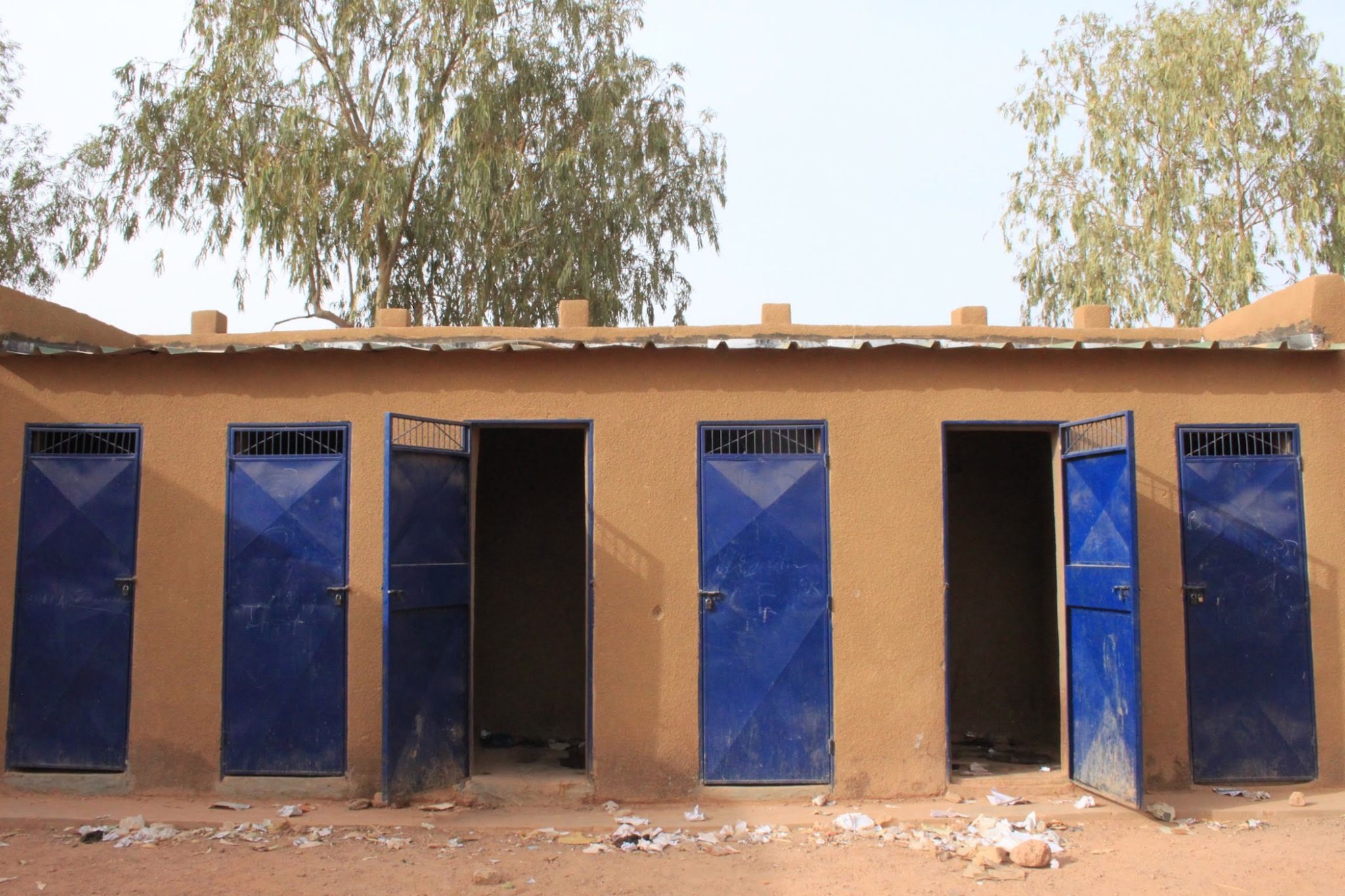Photo courtesy of Beaumont Design of contemporary latrines in a developing area, where Andrew Whitesell is researching and learning how to implement the Omni-Ingestor.
Night soil, as untreated human excrement collected from latrines or sitting on open-air fields is sometimes called, festers with disease-causing pathogens. Exposure to such matter affects hundreds of thousands of people in the developing world, causing cholera, ascariasis, encephalitis, and other flesh-eating diseases. “It’s hell on earth,” says Andrew Whitesell of Beaumont Design, based at the Mānoa Innovation Center. In response, he and his team are helping design an efficient, adaptable way to prevent populations from being exposed to human waste, while turning this discharge into resources: the Omni-Ingestor program, funded by the Bill and Melinda Gates Foundation.
“This is a four-phase project including the Reinvent the Toilet Challenge, or ‘next-generation toilets’ that don’t require sewer connection or electricity; the Omni-Processor; and the Omni-Ingestor,” says Whitesell, who is project manager of the Fecal Sludge Omni-Ingestor program. “Our goal is to create a system that pumps out waste water from latrine pits and septic tanks, eliminating the need for pump trucks to come as often, if at all.” In some places, this will mean that communities will no longer have to dig out latrines by shovel and bucket. After pumping, the waste is delivered to the Omni-Processor, which coverts sludge and water into energy and drinkable water.
The need for better sanitation practices is clear, yet this simple premise has only recently motivated innovative technological solutions to sanitation issues, like the ones funded by the Gates Foundation. Investing in transformative technologies, like the groundbreaking Janicki Omni-Processor, which turns human waste into clean water, the foundation hopes to solve the sanitation problem altogether. Bill Gates raises his poop water glass every chance he gets to help boost the initiative (check out his air time with Jimmy Fallon). And in fact, if this plan works, it could show how inefficiently sewage is managed in the United States, where centralized sewer systems discharge water and use energy, instead of returning resources to the community.
A mechanical engineer, Whitesell previously worked for a medical device company in Hawai‘i developing a semi-non-invasive surgical detection system before starting his own consulting business in California in 2011. At the time, the Gates Foundation put out a call for proposals for the Omni-Ingestor program. Whitesell contacted a friend who had experience working with pumps to develop a design concept. He proceeded with his proposal, and was among the six companies chosen. “The senior program officer says to me, ‘We don’t want to hire you. We want to hire your subcontractor, and we want you to manage the entire program.’”
For three years, Whitesell has traveled to the slums of India, Africa, Bangladesh, and back home to the Mānoa Innovation Center, where he and his team, led by Christopher Chock, continue research and development. “The goal is to be able pump 100 percent of the waste in the world, and in order to do this, we need a rugged system that can handle a wide range of environmental conditions, and we need it to be affordable,” says Whitesell. “We also need to consider diet, religion, roads, construction techniques, rainfall, temperature, and whether or not there’s a war zone nearby. This project is so challenging because there are so many variables.”
Even in non-developing countries, Whitesell says, “There is no limit to where you can use it.” If disaster did strike Hawai‘i, would the Omni-Ingestor program be able to help? Whitesell seems to think so. “We would need about a hundred systems to be able to pump all the water we use, but we could do it.”
Learn more about the omni-ingestor at gatesfoundation.org and beaumontdesign.com.

